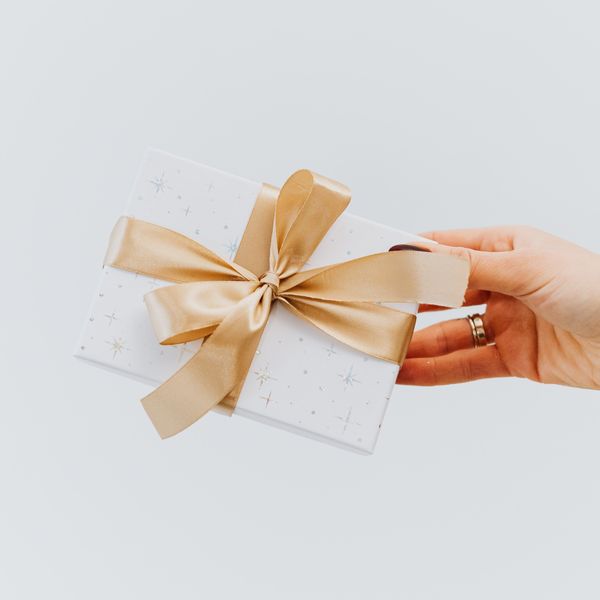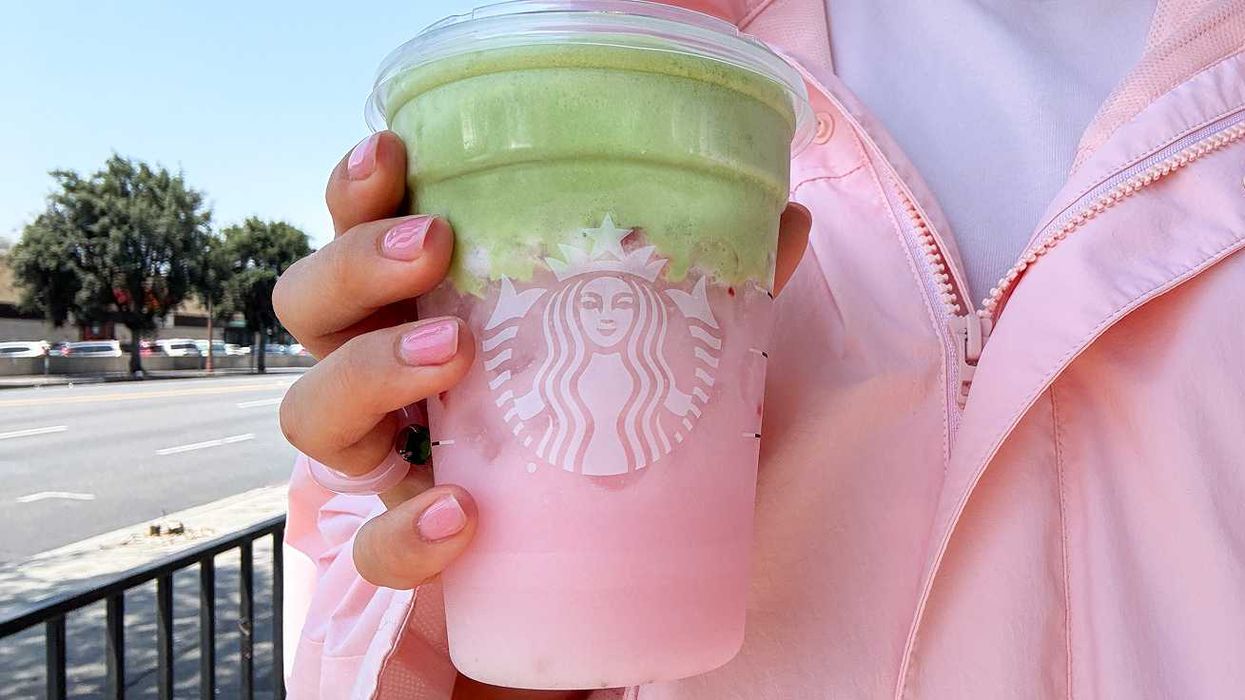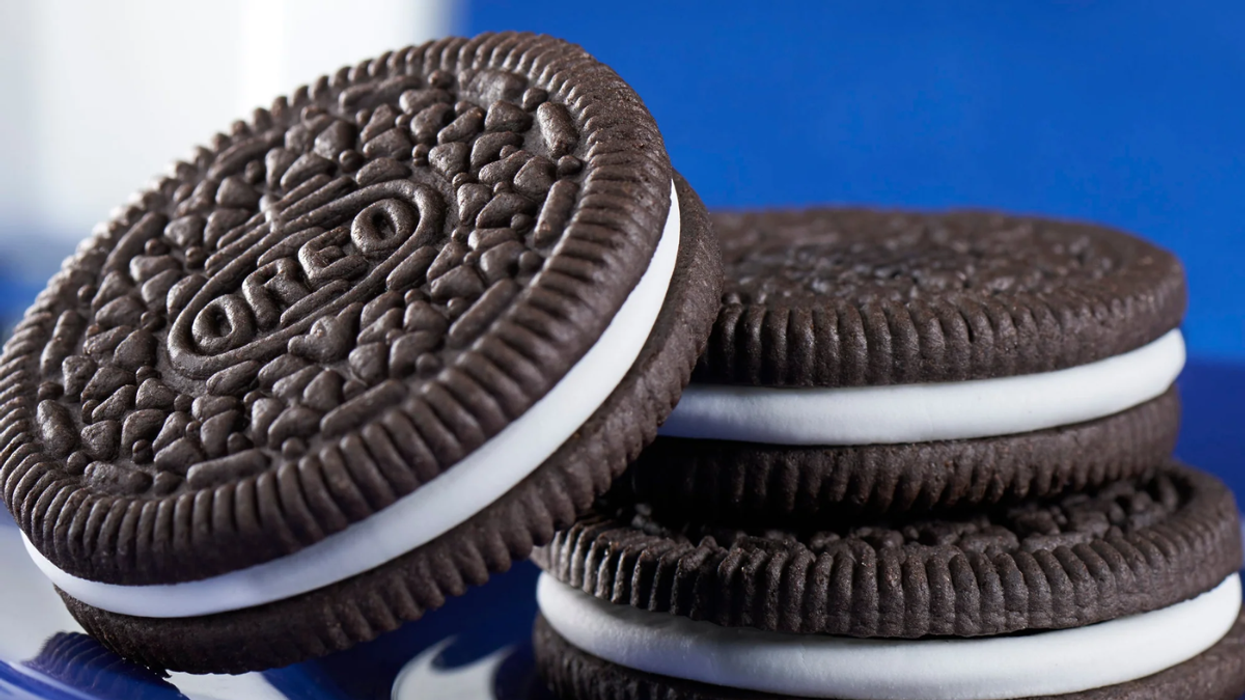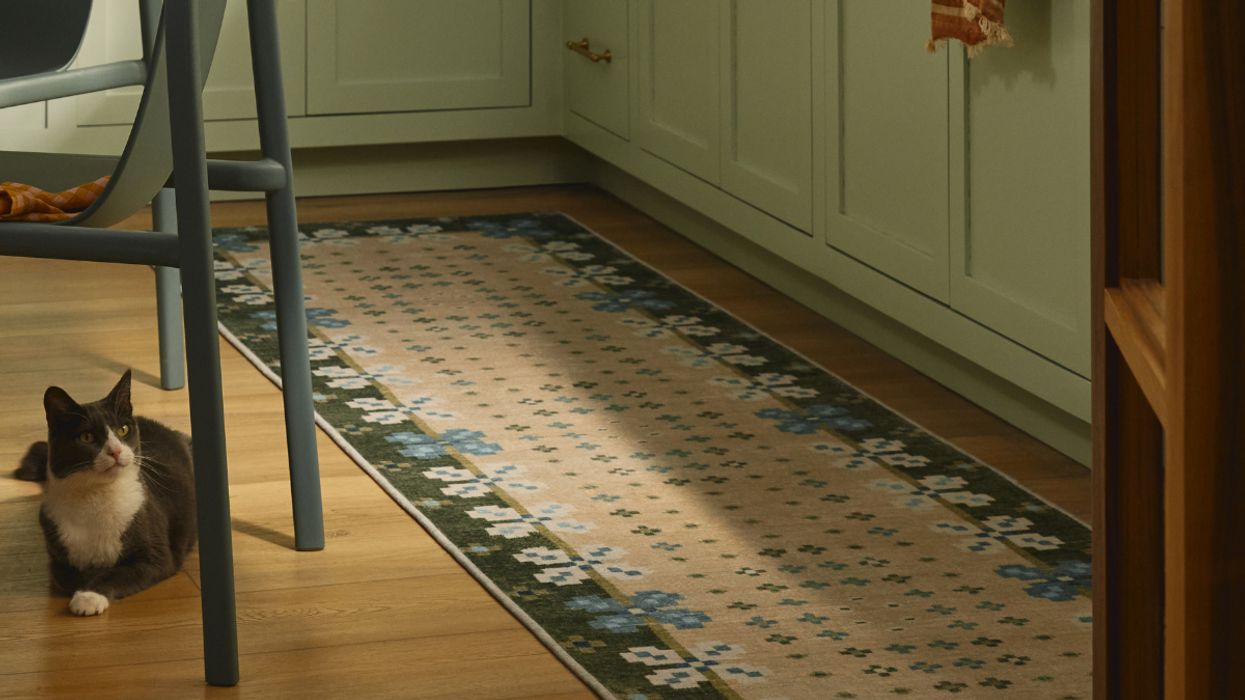Dye your eggs the natural way. With veggies!
How to Make Natural Egg Dye from Vegetables
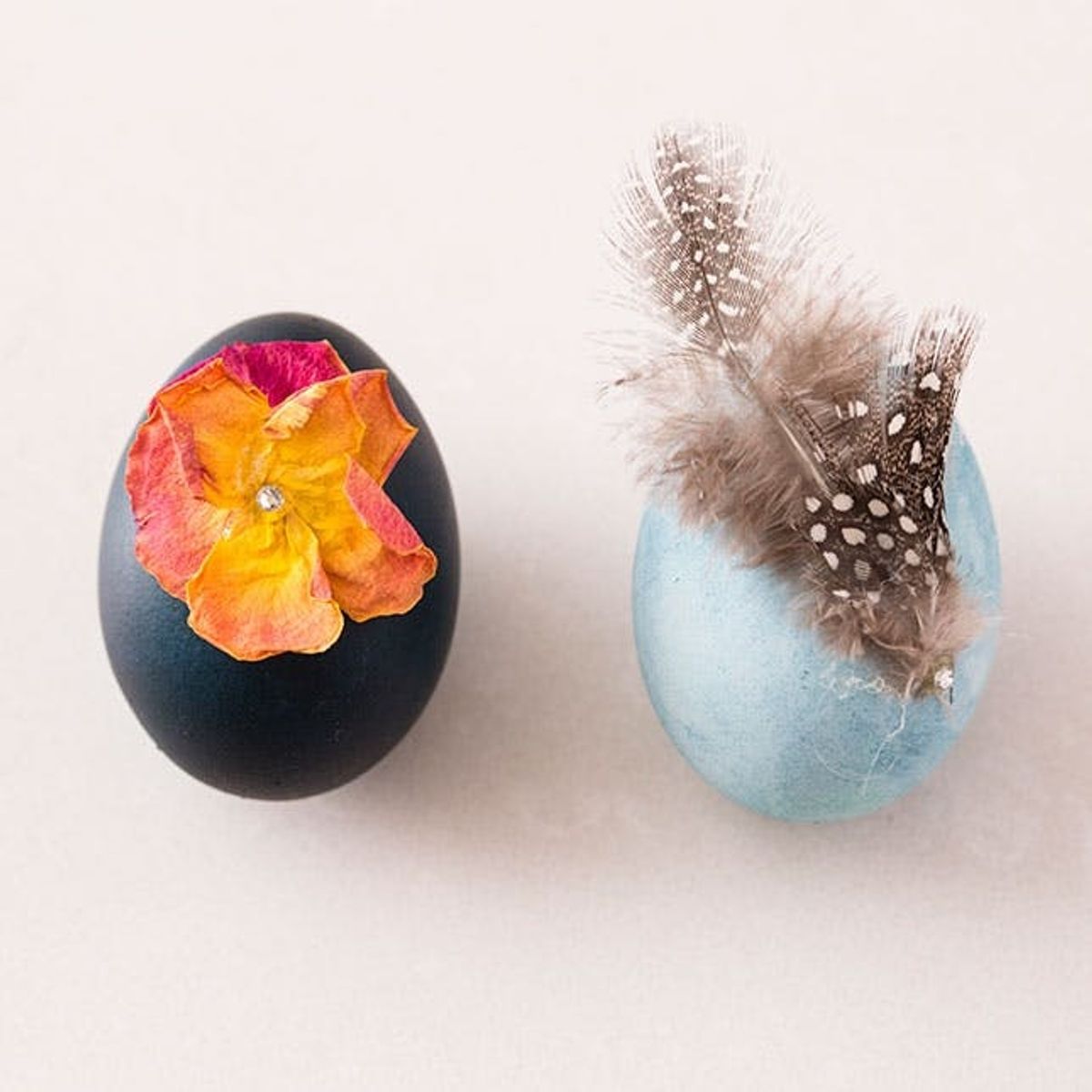
Did you know that you can make easter egg dye out of veggies? You can! And with Easter on its way, we are going to show you how to dye eggs the natural way. We’ve got three gorgeous color recipes to share and three crazy cool ways to decorate your eggs using dyes derived from the produce section of the supermarket. To get you started, we have all the Easter supplies and gifts for Easter baskets in our shop + scoop on how to properly boil an easter egg and more in our Easter Egg Basics. Let’s get this party crackin’ ;)
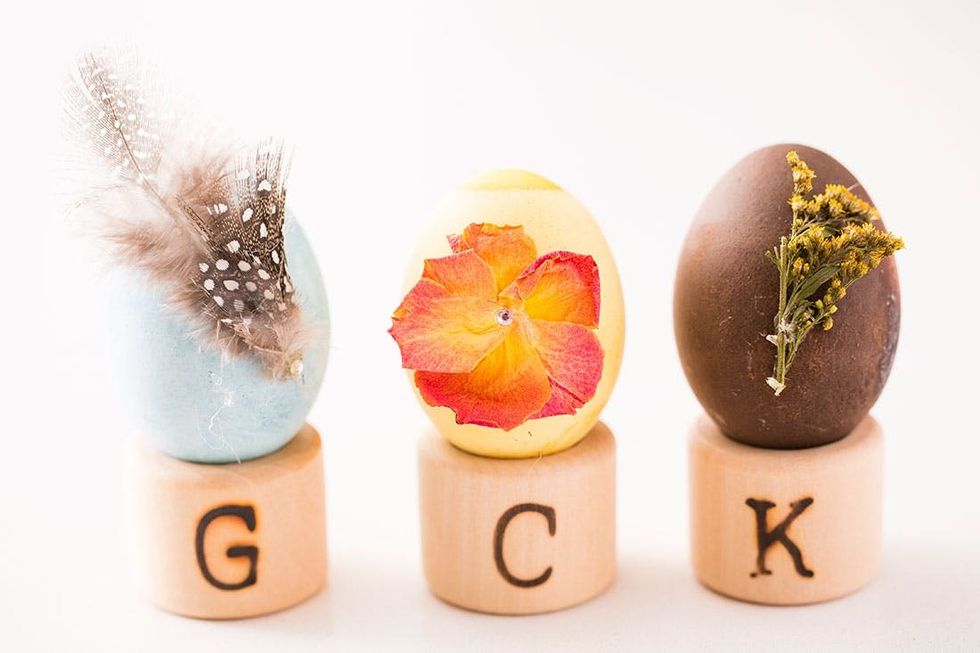
Cabbage Dyed Eggs
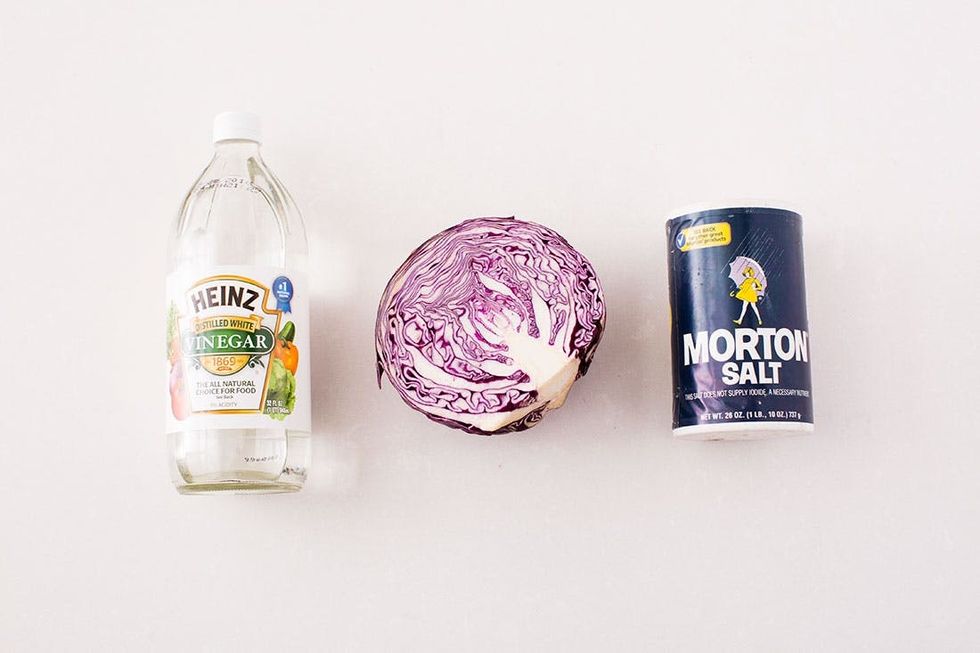
Cabbage creates a brilliant fuchsia color that will dye your egg turquoise!
Materials:
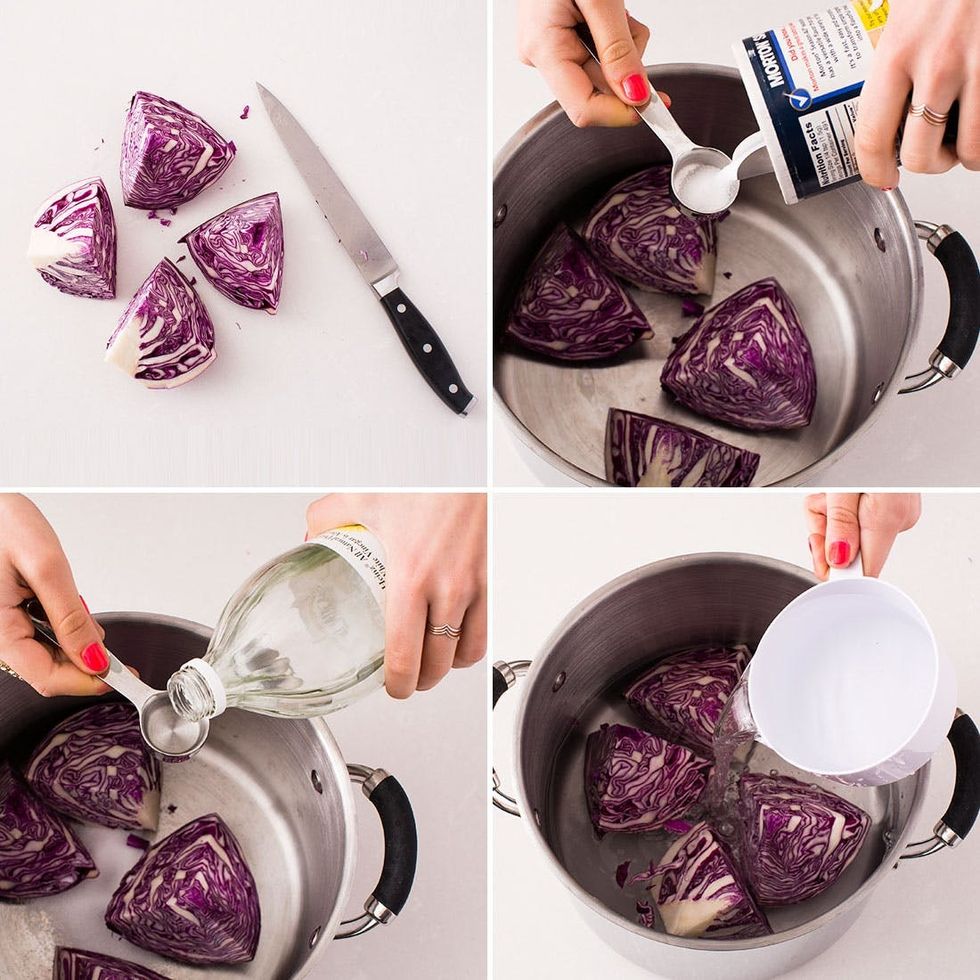
– half a cabbage
– distilled white vinegar
– table salt
Chop your cabbage into quarters and place them in a sauce pan. Add a tablespoon of distilled white vinegar and a tablespoon of salt. Cover your cabbage with water.
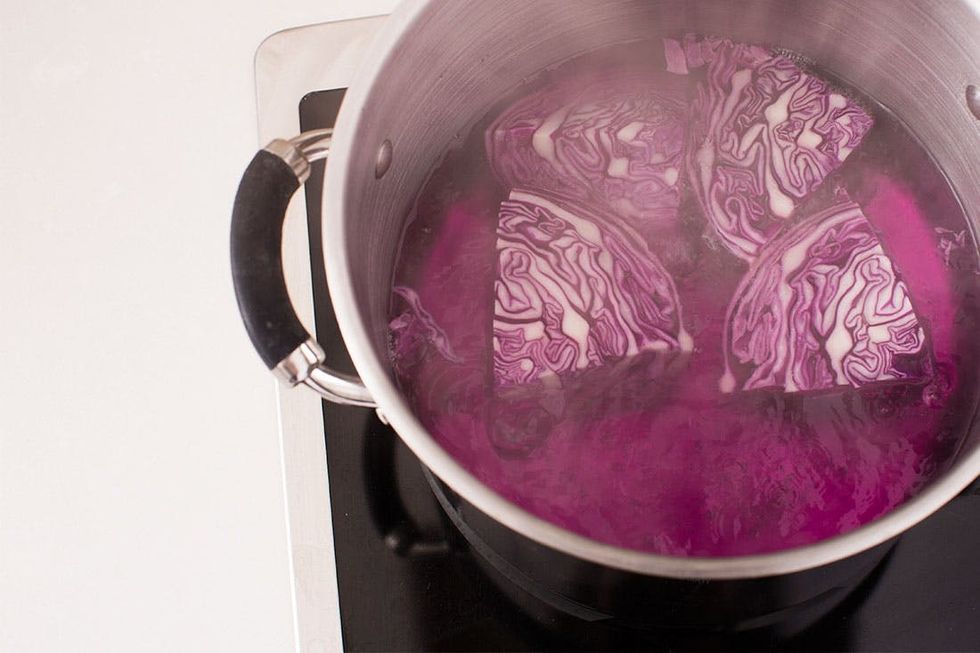
Then boil it on the stove. You can already see the vibrant color it’s creating.
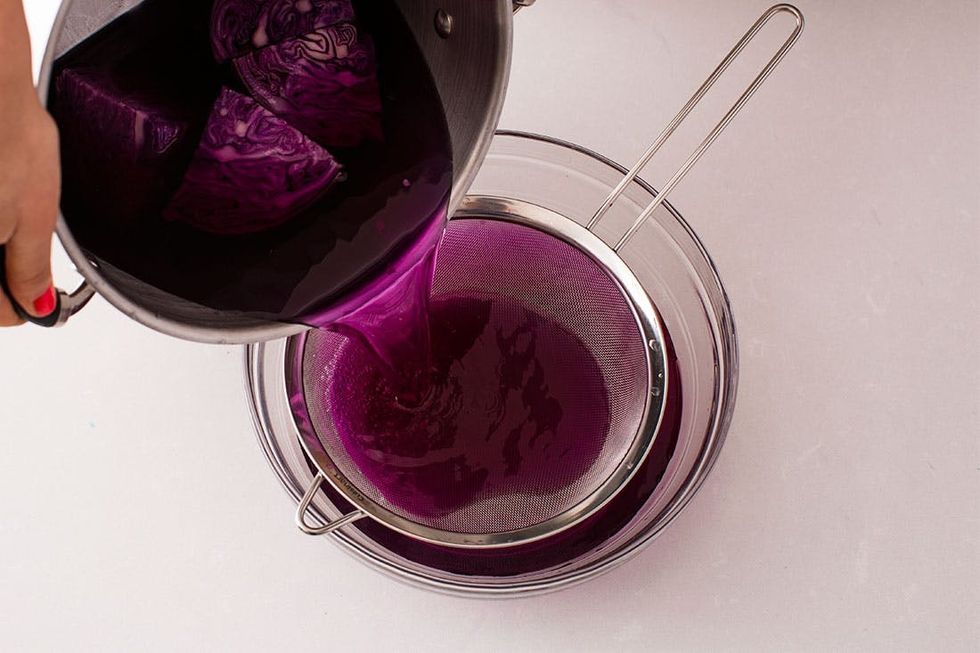
Once you have a deep fuchsia, strain the cabbage.
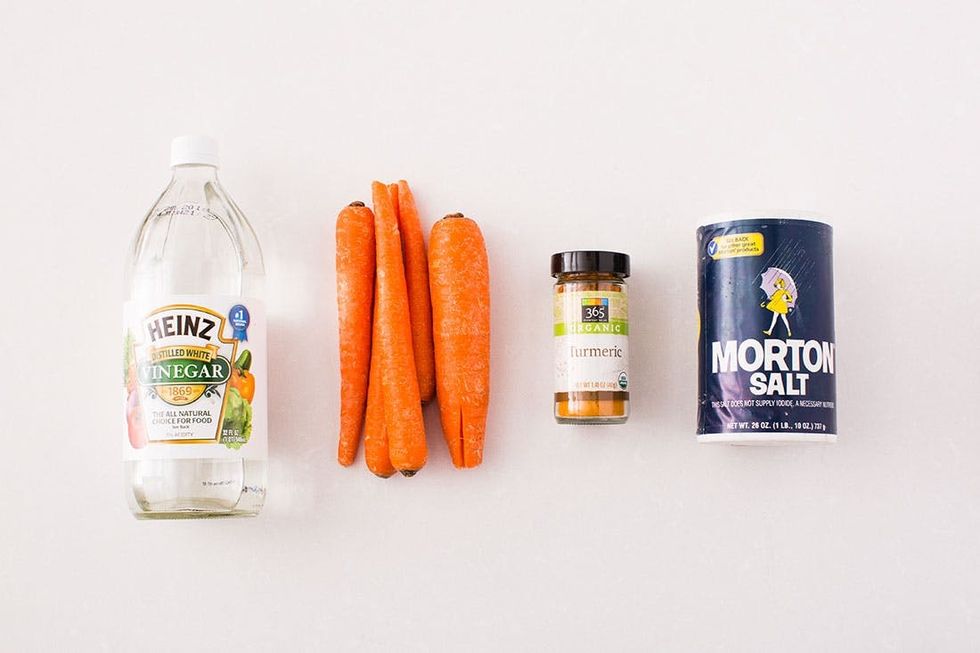
This ingredient combo is great for your diet and just as great for dyeing eggs. It creates a glorious, sunny yellow.
Materials:
Carrot and Turmeric Dyed Eggs
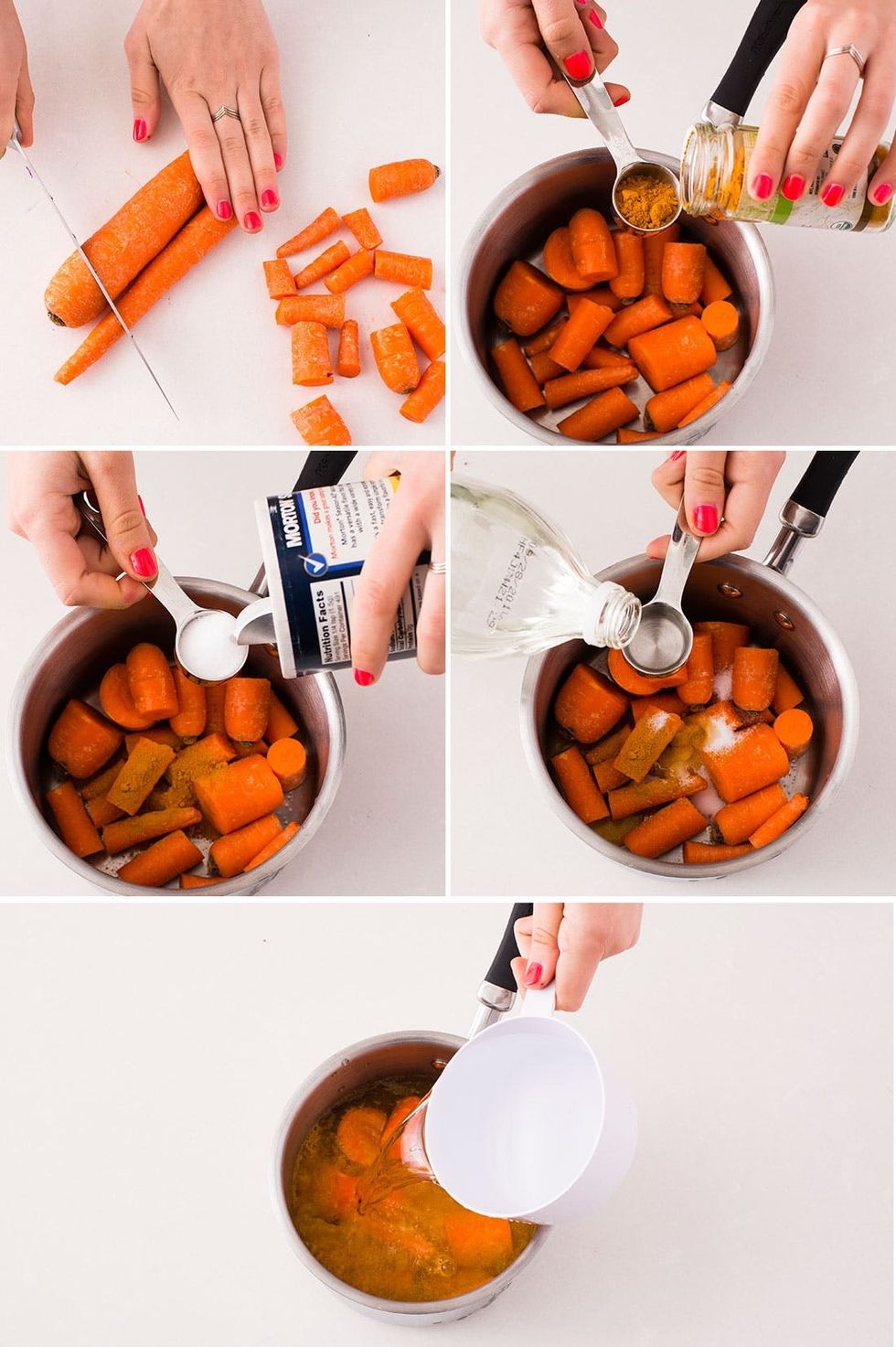
– 4-5 carrots
– turmeric
– distilled white vinegar
– table salt
The instructions for this are almost identical to the cabbage directions. Chop your carrots and put them in a sauce pan. Add a tablespoon each of the next three ingredients. Cover your goodies with water and give it a quick stir.

Boil your concoction until you get an orange-yellow shade.
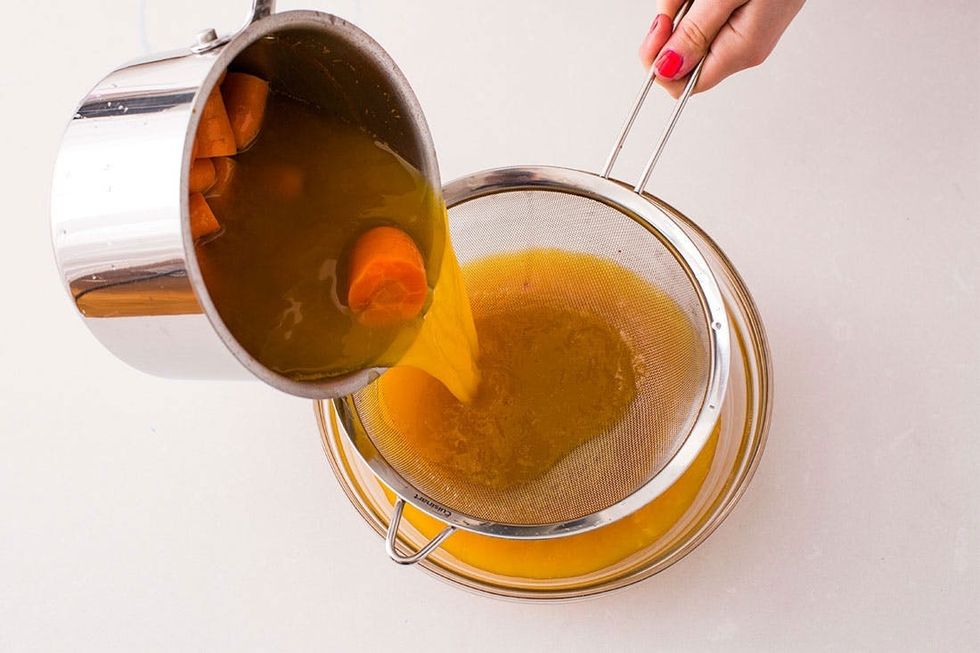
Strain your carrots, allowing the liquid to pour into a bowl.
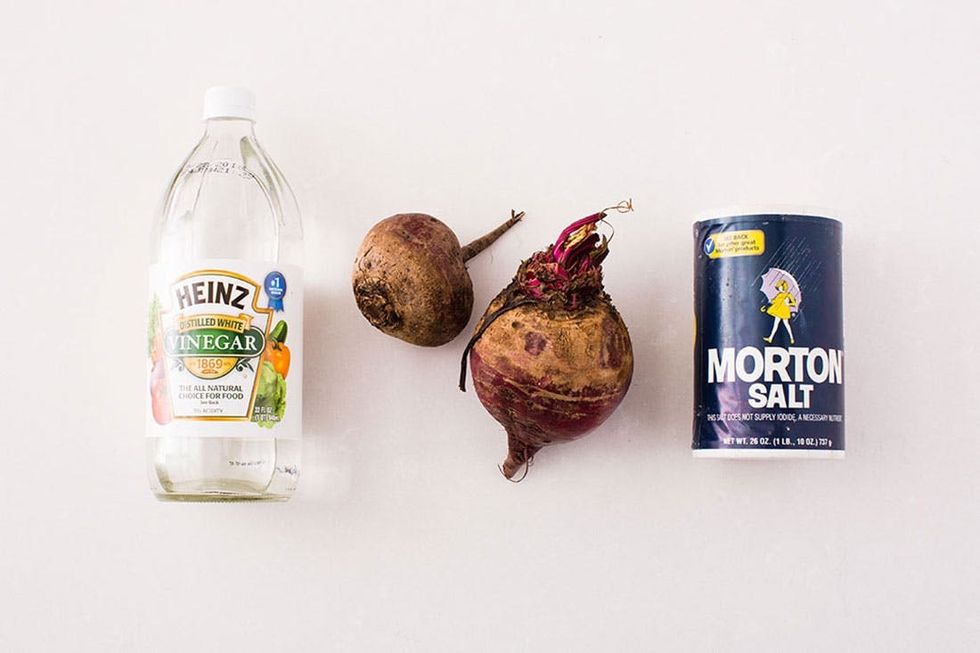
The saying “to turn beet red” doesn’t actually apply to this egg dye. Rather than a deep red, the beets will turn your egg into a rust red color.
Materials:
Beet Dyed Eggs
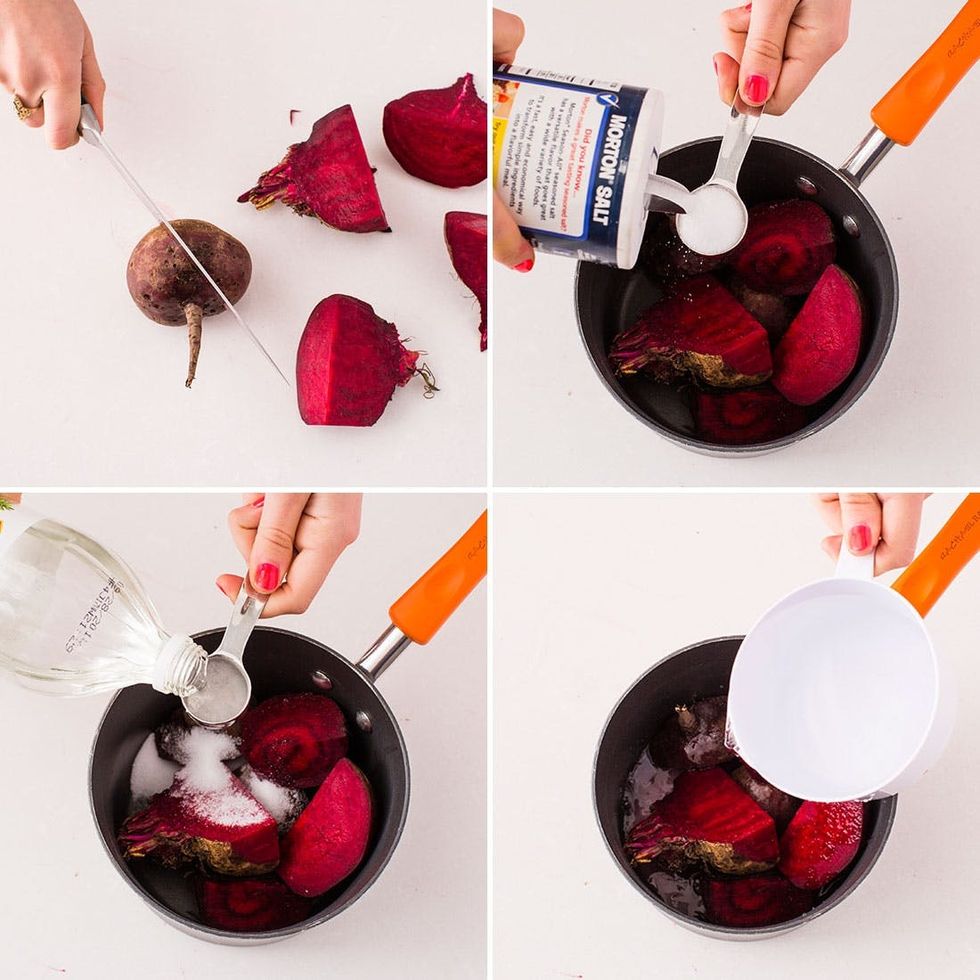
– two beets
– distilled white vinegar
– table salt
Third time’s a charm. Here we go with our rust red dye. Cut your beets and drop them into a sauce pan. Add a tablespoon of vinegar and a tablespoon of salt. Pour water over the top and get to boiling. Strain the beets once you have a blood red liquid.
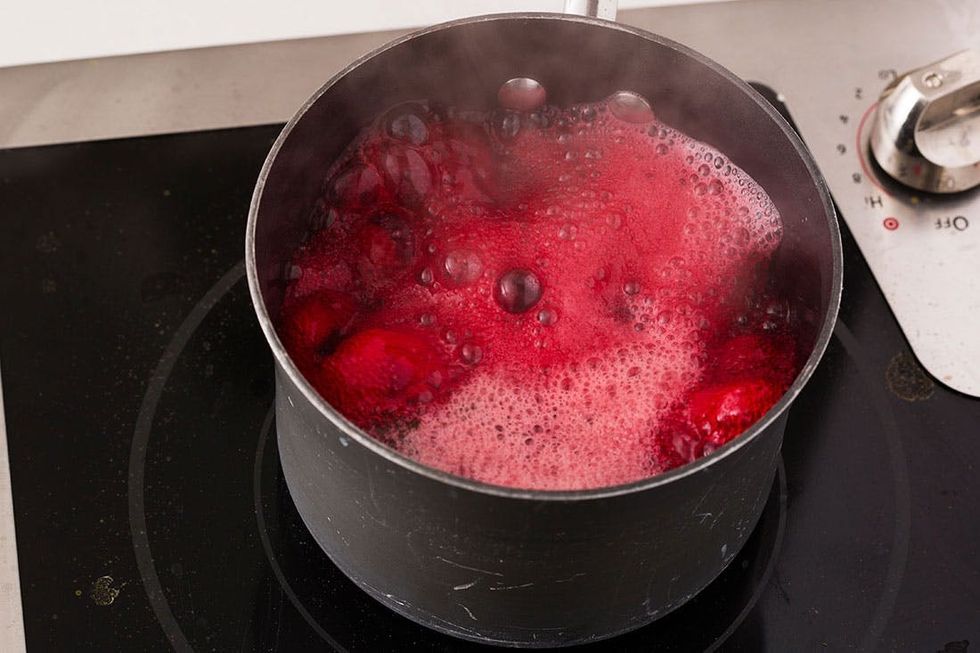
Now that your dyes are ready, place your hard-boiled eggs in the bowls.
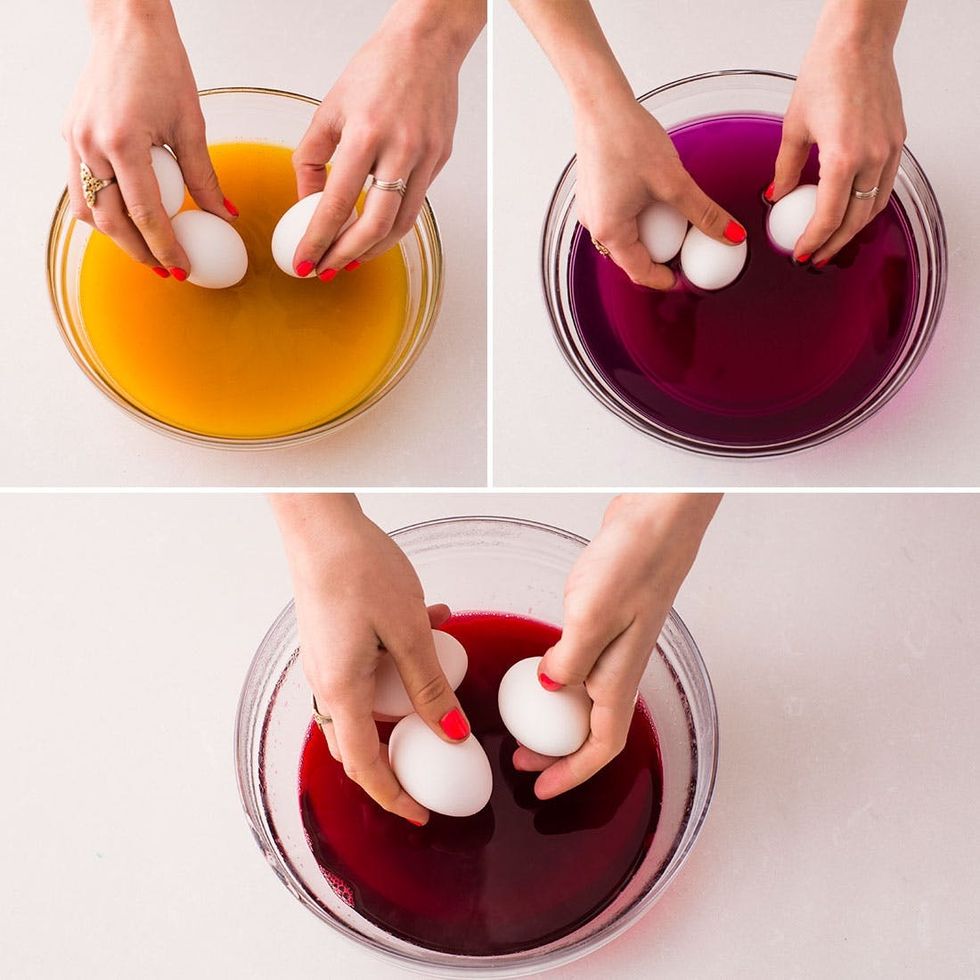
If you have plans to eat the eggs, put the bowl (with the egg in it) into the fridge and leave it there overnight. The longer it stays in the dye, the darker your color will be.
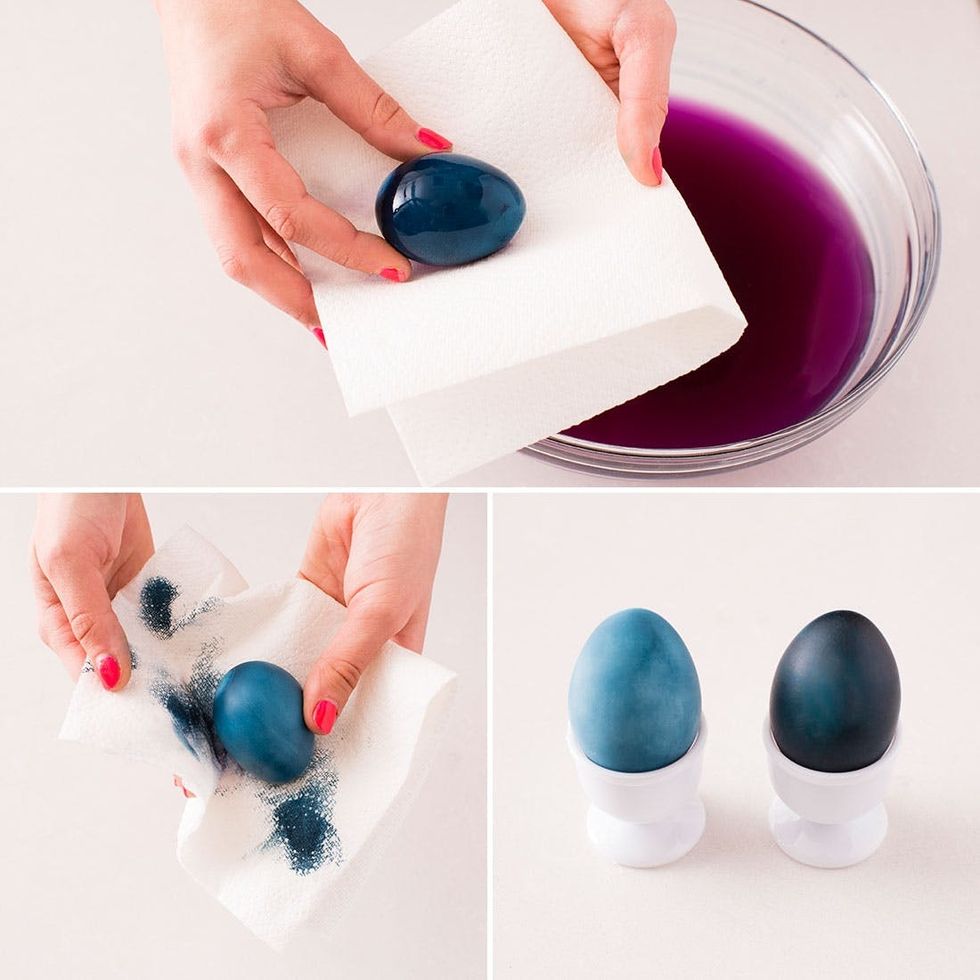
Once the dye has set, you can either wipe off some of the residue for a lighter shade or leave it as is for that darker hue. Check out our two shades of blue.
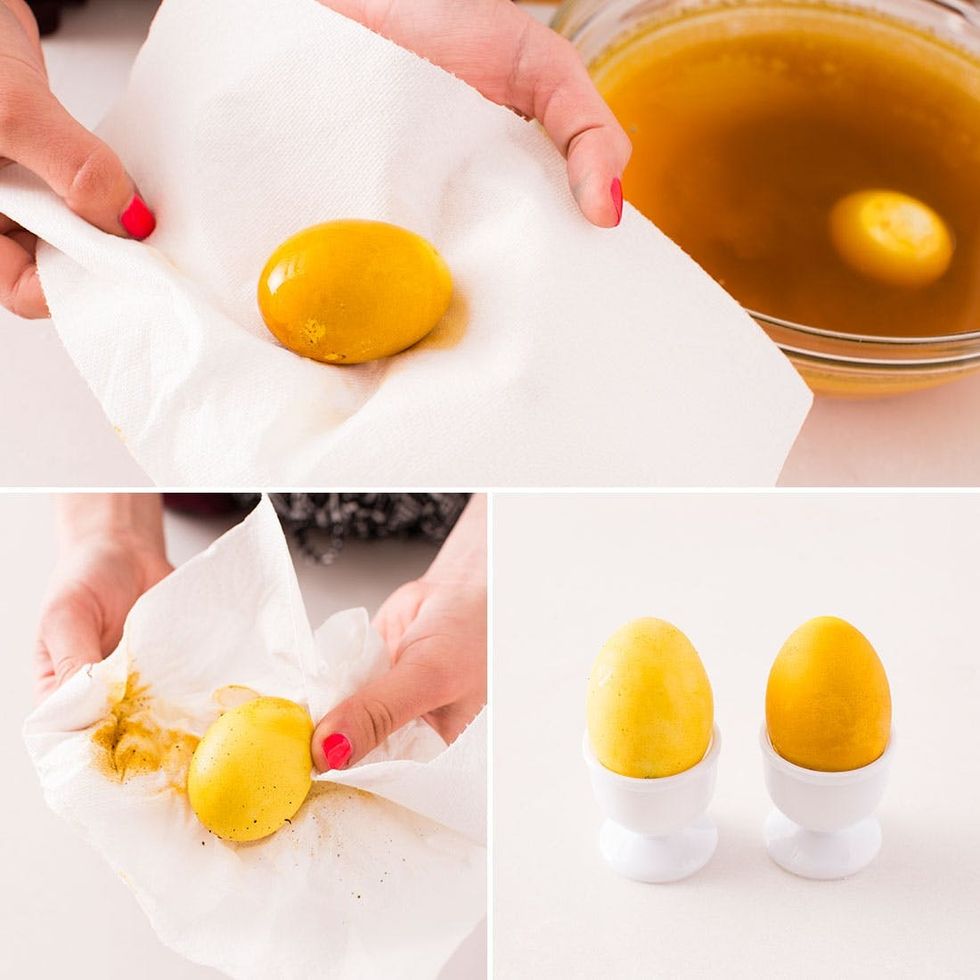
Here’s a sunshine yellow.
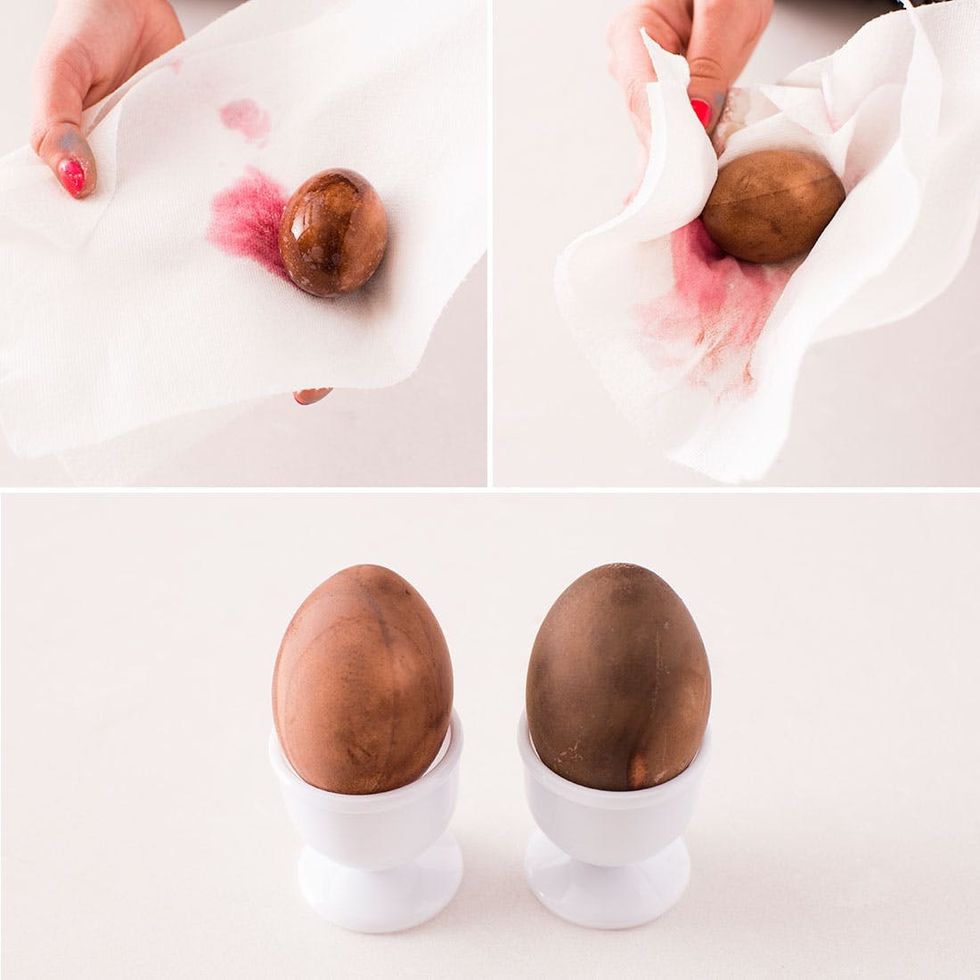
And a rusty red or brown.
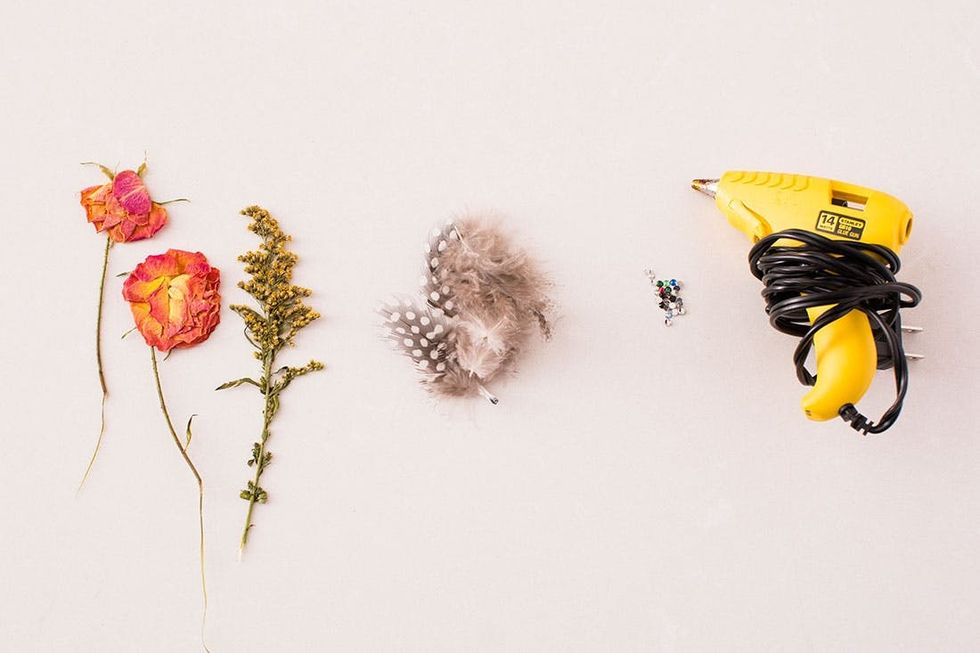
Now for the decorations!
We’ve got pressed flowers, feathers and gems to add to our eggs. Natural decorations on natural dye with a little bling, because, duh. These can easily be added to your eggs with hot glue.
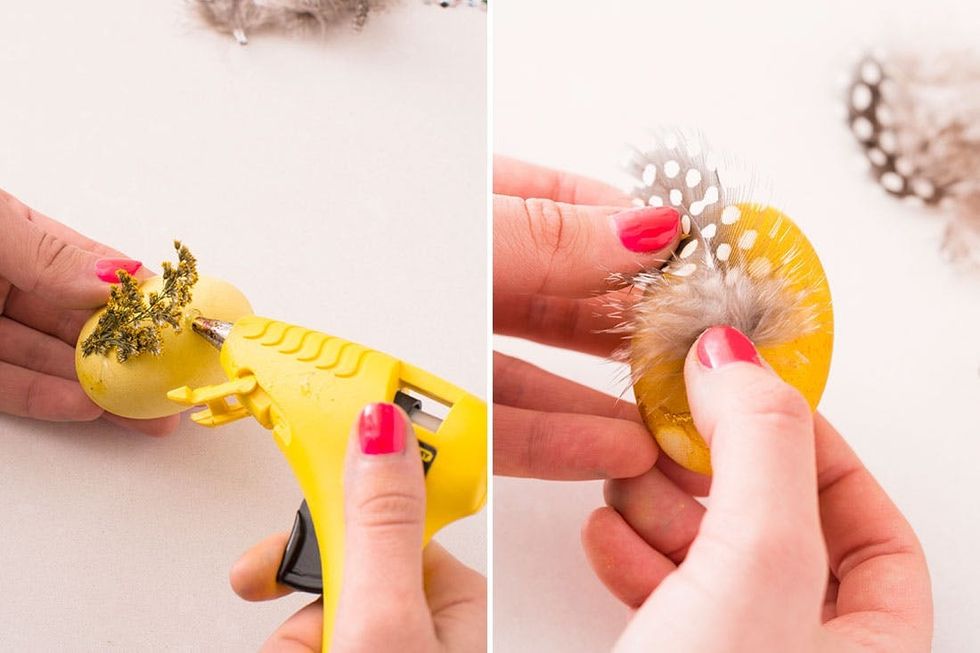
We added flowers to some and feathers to others.
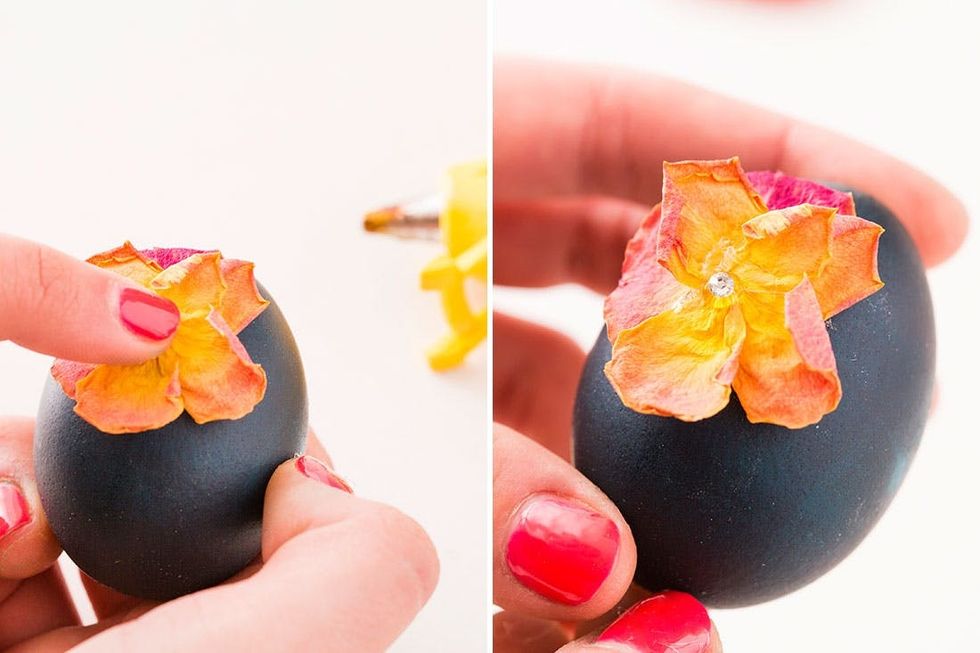
A little gem in the center of our dried flower gives it that sparkle we love.
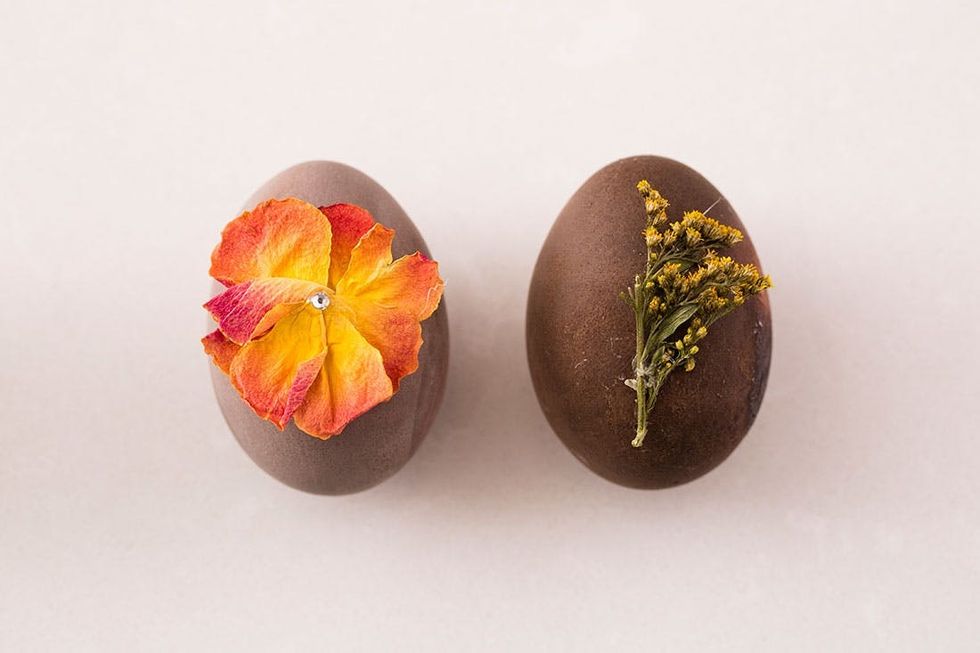
So beautiful and organic.
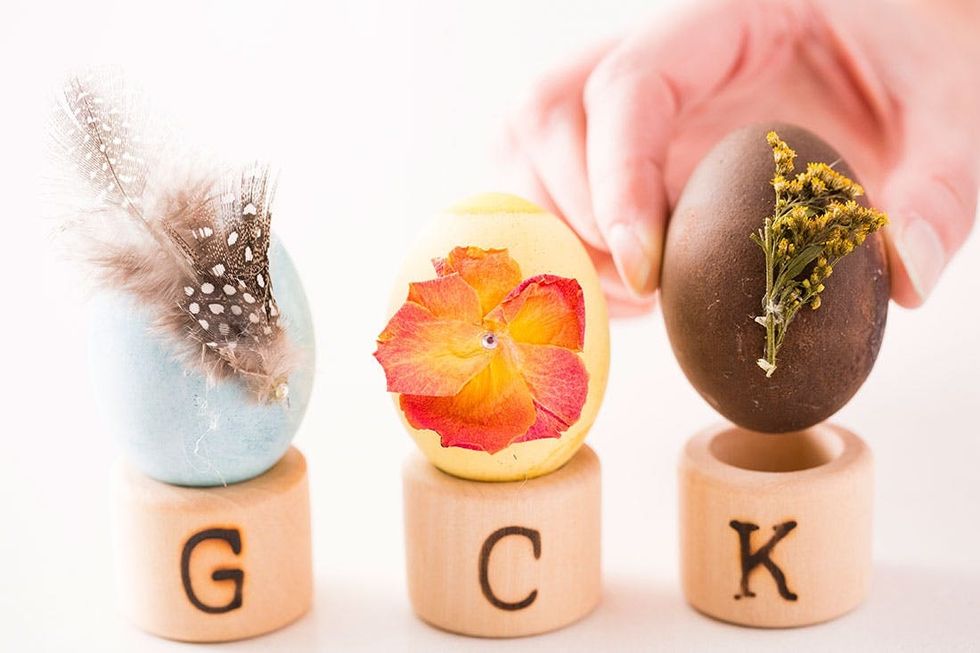
Put them on stands as a centerpiece.
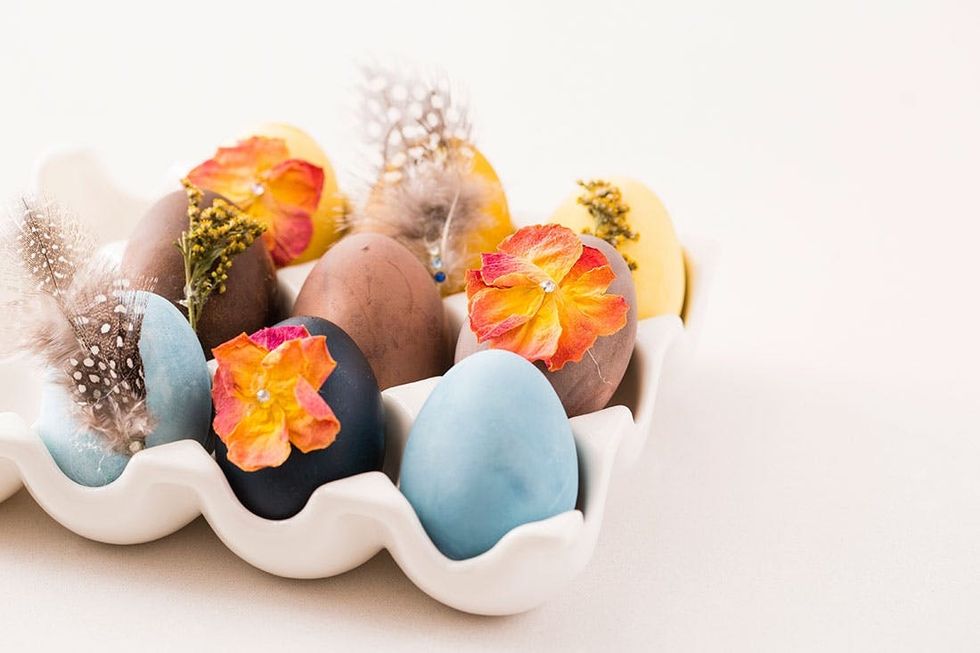
Or in an egg crate.
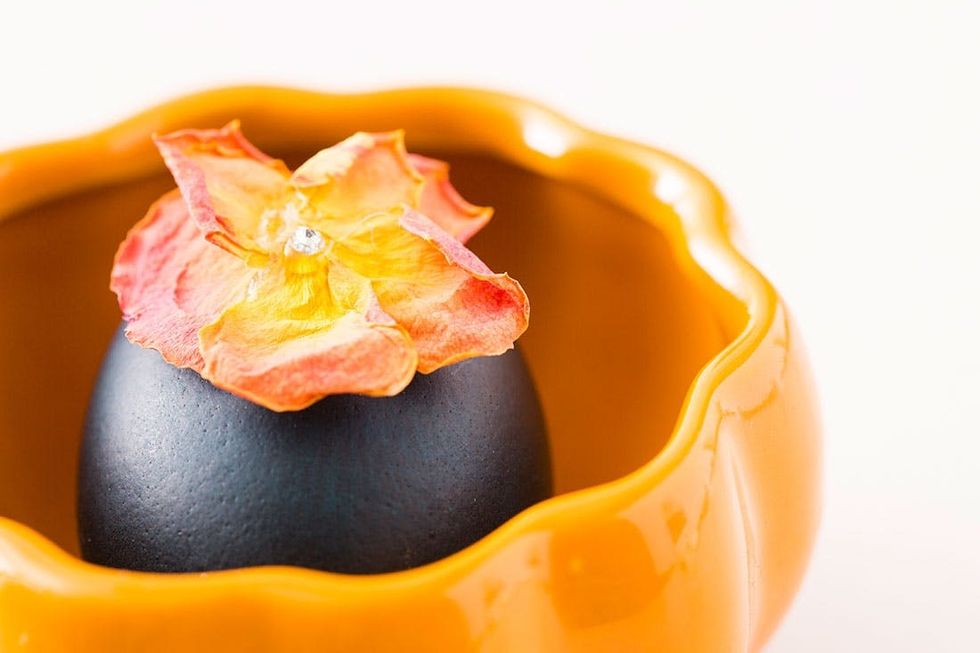
Have you used natural dye before? What other ingredients and colors have you made? We’re curious and would love to hear from you.


